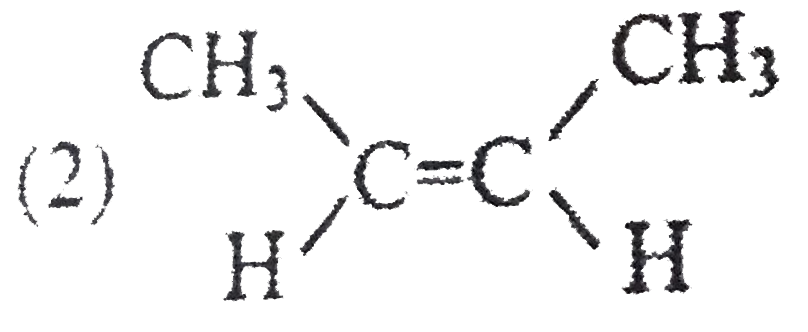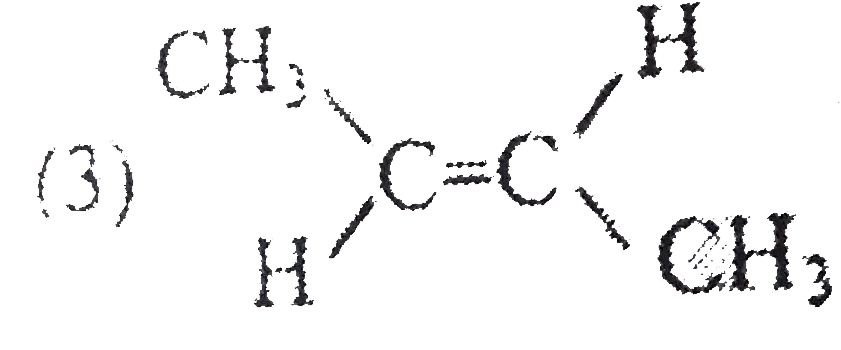Reaction Reaction rate of reaction
The correct Answer is:
To solve the problem of matching the reaction rates with the corresponding reactions, we need to analyze the leaving groups present in each reaction. The leaving group is crucial in determining the rate of the reaction. Here’s a step-by-step solution:
Step 1: Identify the Leaving Groups
In the reactions provided, the leaving groups are:
- (A) Iodine (I)
- (B) Bromine (Br)
- (C) Chlorine (Cl)
- (D) Fluorine (F)
Step 2: Rank the Leaving Groups
The effectiveness of a leaving group is determined by its ability to stabilize the negative charge after leaving. The general order of leaving group ability from best to worst is:
1. Iodine (I) - best leaving group
2. Bromine (Br)
3. Chlorine (Cl)
4. Fluorine (F) - worst leaving group
Step 3: Assign Reaction Rates Based on Leaving Groups
Now, we can assign the reaction rates (P, Q, R, S) to the reactions (A, B, C, D) based on the ranking of the leaving groups:
- (A) with Iodine (I) will have the highest rate, so it corresponds to (S) 30,000.
- (B) with Bromine (Br) will have the next highest rate, corresponding to (R) 10,000.
- (C) with Chlorine (Cl) will have a lower rate, corresponding to (Q) 200.
- (D) with Fluorine (F) will have the lowest rate, corresponding to (P) 1.
Step 4: Final Matching
Based on the analysis:
- (A) Iodine (I) → (S) 30,000
- (B) Bromine (Br) → (R) 10,000
- (C) Chlorine (Cl) → (Q) 200
- (D) Fluorine (F) → (P) 1
Summary of the Final Order
The final order of reaction rates based on the leaving groups is:
- A → S (30,000)
- B → R (10,000)
- C → Q (200)
- D → P (1)
In the reactions provided, the leaving groups are:
- (A) Iodine (I)
- (B) Bromine (Br)
- (C) Chlorine (Cl)
- (D) Fluorine (F)
The effectiveness of a leaving group is determined by its ability to stabilize the negative charge after leaving. The general order of leaving group ability from best to worst is:
1. Iodine (I) - best leaving group
2. Bromine (Br)
3. Chlorine (Cl)
4. Fluorine (F) - worst leaving group
Now, we can assign the reaction rates (P, Q, R, S) to the reactions (A, B, C, D) based on the ranking of the leaving groups:
- (A) with Iodine (I) will have the highest rate, so it corresponds to (S) 30,000.
- (B) with Bromine (Br) will have the next highest rate, corresponding to (R) 10,000.
- (C) with Chlorine (Cl) will have a lower rate, corresponding to (Q) 200.
- (D) with Fluorine (F) will have the lowest rate, corresponding to (P) 1.
Based on the analysis:
- (A) Iodine (I) → (S) 30,000
- (B) Bromine (Br) → (R) 10,000
- (C) Chlorine (Cl) → (Q) 200
- (D) Fluorine (F) → (P) 1
The final order of reaction rates based on the leaving groups is:
- A → S (30,000)
- B → R (10,000)
- C → Q (200)
- D → P (1)
Topper's Solved these Questions
- ALKYI HALIDEBOOK - MOTIONCHAPTER - ALKYI HALIDEEXERCISE - Exercise -3
14 Videos
- ALKYI HALIDEBOOK - MOTIONCHAPTER - ALKYI HALIDEEXERCISE - Exercise - 4 | Level-I
18 Videos
- ALKYI HALIDEBOOK - MOTIONCHAPTER - ALKYI HALIDEEXERCISE - Exercise - 2 (Level-I) (Prepration of Alkyl halide)
7 Videos
- ALCOHOLS & ETHERSBOOK - MOTIONCHAPTER - ALCOHOLS & ETHERSEXERCISE - EXERCISE -4 (LEVEL -II) PREVIOUS YEAR JEE ADVANCED
9 Videos
- AROMATIC COMPOUNDBOOK - MOTIONCHAPTER - AROMATIC COMPOUNDEXERCISE - Exercise - 4 | Level-II
16 Videos
Similar Questions
Classify the following reactions in one of the reaction type studied in this unit.
(a) CH3CH2Br+HS−→CH3CH2SH+Br−
(b) (CH3)2C=CH2+HCl→(CH3)2ClC−CH3
(c) CH3CH2Br+HO−→CH2=CH2+H2O+Br−
(d) (CH3)3C−CH2OH+HBr→(CH3)2CBrCH2CH2CH3+H2O
View SolutionClassify the following reactions in one of the reaction type studied in this unit.
(a) CH3CH2Br+HS−→CH3CH2SH+Br−
(b) (CH3)2C=CH2+HCl→(CH3)2ClC−CH3
(c) CH3CH2Br+HO−→CH2=CH2+H2O+Br−
(d) (CH3)3C−CH2OH+HBr→(CH3)2CBrCH2CH2CH3+H2O
View Solution
Knowledge Check
the major product of the reaction Is -
CH3CH2CHCH3AgOH−−−→heat∣(CH3)3N⊕IӨACH3CH2CH=CH2B C
C DCH3CH2C∣OHHCH3
DCH3CH2C∣OHHCH3Which one is preferable reagent for given reaction ?
RCH2−X→HO−CH2RA(H2O+KOH)B(ROH+KOH)C(ROH+KOH)/ΔD(H2O+KOH)/ΔThe reaction RCH2CH2COOHRedP−−→R−CH2−CH−COOH
AReimer- Tiemann reactionBHell-volhard Zelinsky reactionCCannizzaro reactionDSandmeyer reaction
Give the IUPAC name for the compound HO−CH2−CH2−OH.
View SolutionCompare the stability of the following carbanion
(a)ӨCH2−CF3 (b)ӨCH2−CCl3
(c)ӨCH2−CBr3
View SolutionGive (a) conjugate acid (b) conjugate base of HO(CH2)3NH2
View SolutionWrite IUPAC name of the following compound :
HO−CH2−CH∣OH−CH2−OH
View SolutionH2+CO+R−CH=CH2→R−CH2−CH2−CHO
This reaction is known as
View Solution
